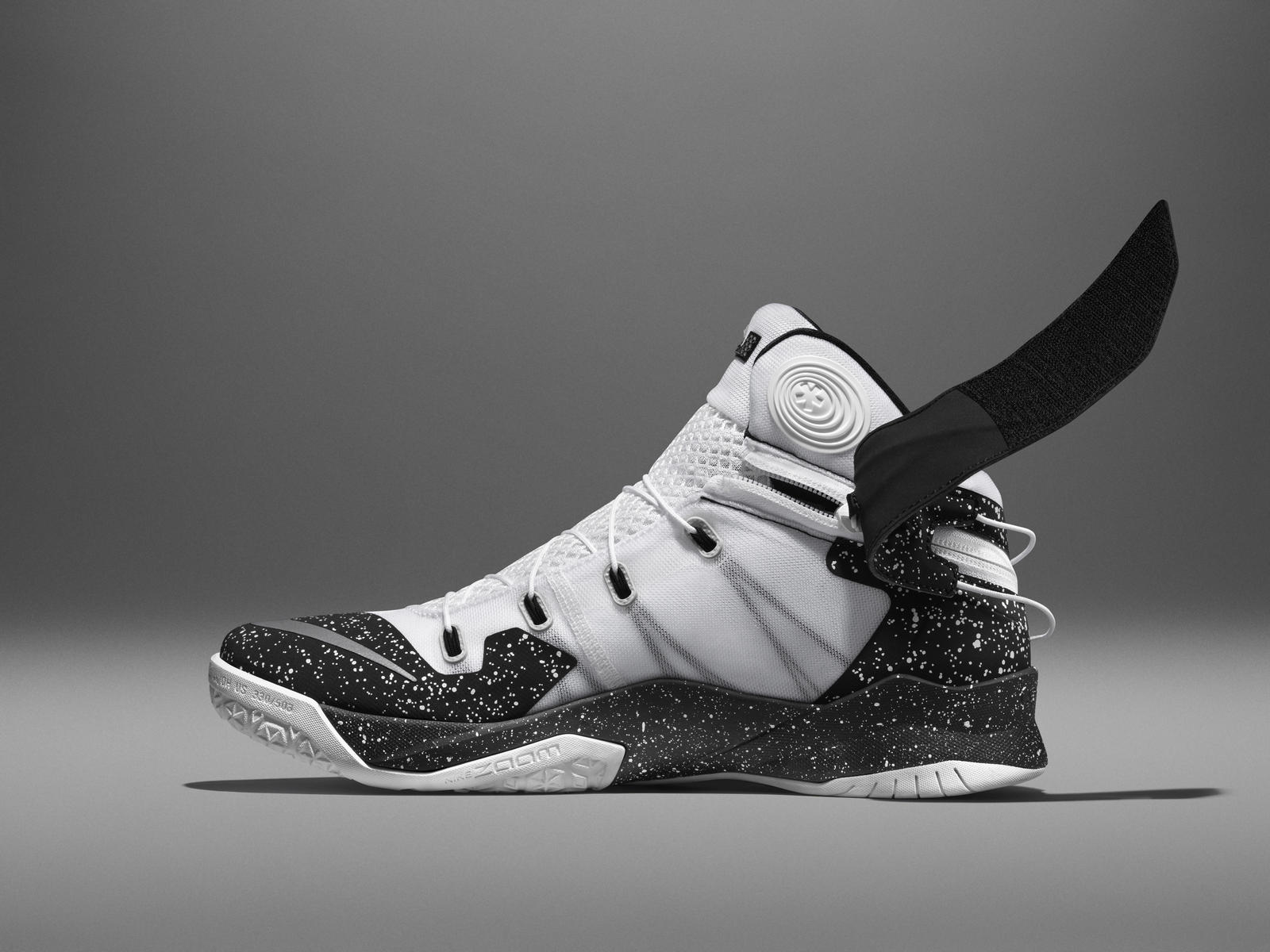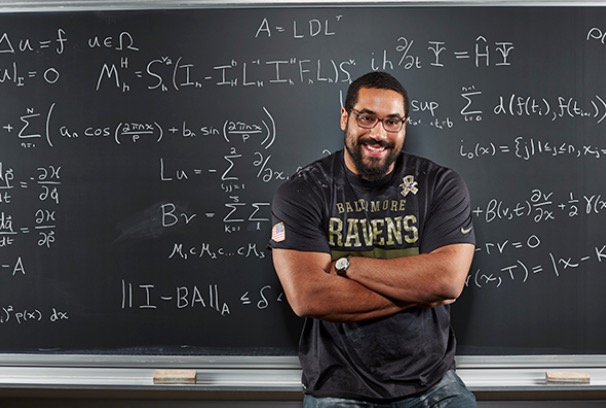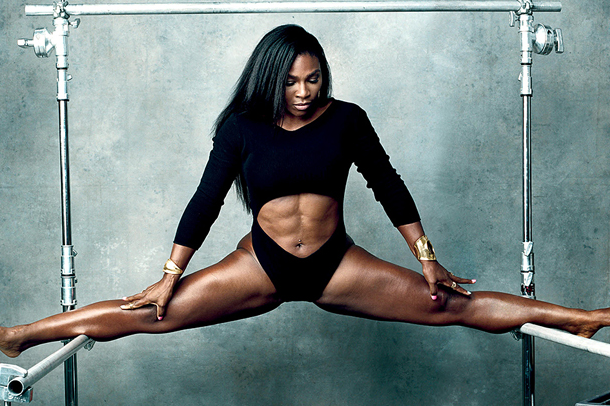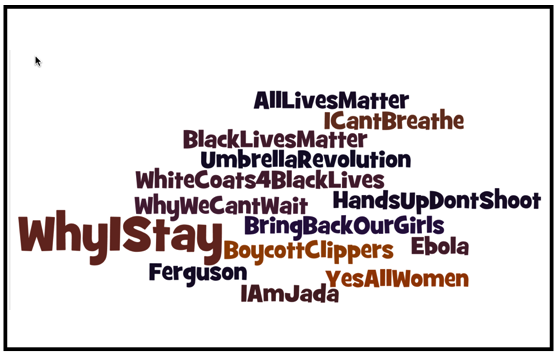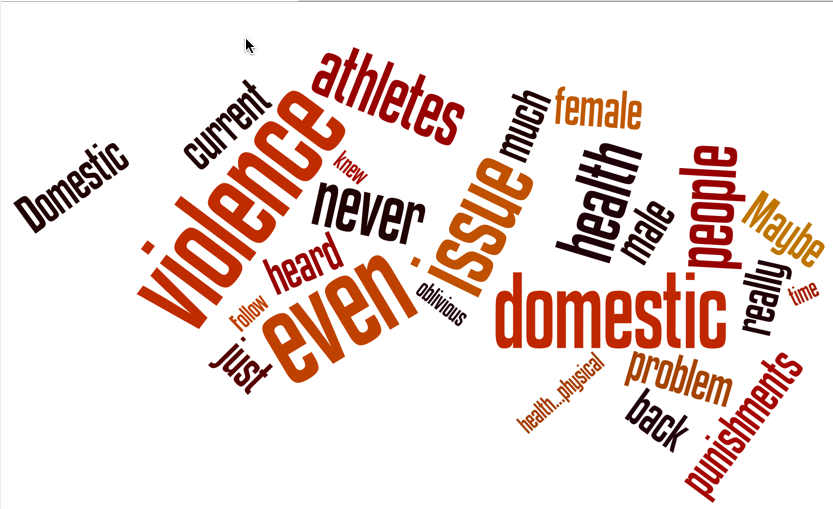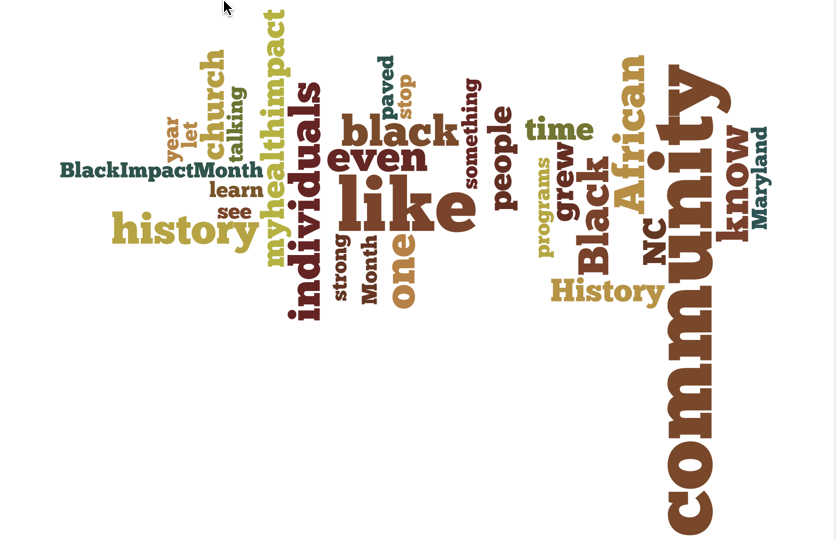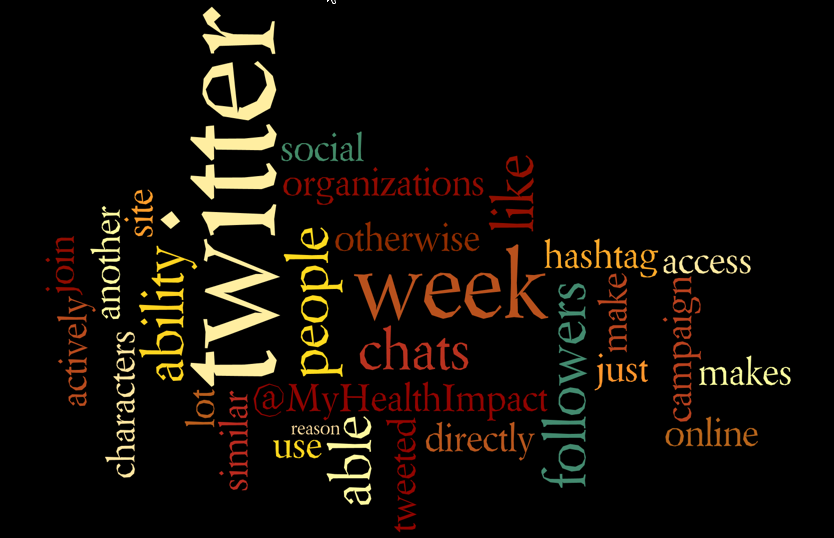myHIN Blog
Category: Physical Health Articles

June 27, 2022
Fay CObb Payton (Presenter), The American Association for the Advancement of Science (AAAS) AI Symposium – Health Care Panel
Fay Cobb Payton (Presenter), The American Association for the Advancement of Science (AAAS) AI Symposium – Health Care Panel
#AI #Bias #HealthCare #Race #UnderservedGroups
Share

December 03, 2015
The Evolution of Sneaker Design Technology pt1
Over the years I have owned just about every kind of sneaker imaginable. Ranging in price from $35 to over $200, if it was hot and my mom could afford it, they were on my feet. From classic Chuck Taylors to Italian owned Filas and even the GOAT Jordans that still outsell just about every other sneaker on the market today. I’ve been in love with footwear for a very long time. From fancy colorways to exclusive collabs, I never thought about the evolution of sneakers until a few years ago when I developed shin splints during a routine workout. It was at this very time that I thought to myself, what percentage of this pain was caused by the shoes on my feet? As a trained computer scientist, I did what most technologists would do call the family podiatrist open up Google search and fire off a few queries. What I got back was pretty interesting:
- Could Your Shoes Be Giving You Shin Splints?
- Worst Shoes for Your Foot Health
- How Shoes Cause Flat Feet and Overpronation
- How Does Your Arch Height Affect Your Shoe Choice and Injury Risk
Not only did my search expose certain brands but styles of shoes too -- ultra high heels, flip flops, and ballet shoes were all known to cause foot problems. I was pretty alarmed at the findings and wanted to know if anyone was looking into solving these types of foot problems through the next generation of footwear design.
Both Adidas and Nike had already invested a good bit of money into their Research and Development division to solve unique problems. Adidas was working on FutureCraft 3D (via YouTube), a unique 3D-printed running shoe midsole which can be tailored to the cushioning needs of an individual’s foot. While Nike took on accessibility by literally reinventing the zipper on performance sneakers. They developed Flyease technology, a system that solves a problem for amputees, stroke victims, and people with cerebral palsy. By using a subtle zipper that snakes around the heel, they were able to let you peel open and close your shoe with one hand.

Neither of these two technologies are widespread yet but I am excited to the see impact foot health has on shoe manufacturers moving forward. With 3D printing, more durable and breathable materials and a conscious customer, someday we’ll live in a world where foot problems are alleviated not created by the shoes we throw on in the morning.
Tweet @myhealthimpact to let us know what you think and tune in for the latest and greatest in #tech, #STEM, #wearables and #health focused blogs!
Share

October 22, 2015
STEAM and Sports
There has been much discussion on Baltimore Ravens offensive lineman, John Urschel. Urschel is currently in his second NFL season, but his energy is not fully invested in football. While attending and playing football at Penn State University, he earned both a bachelor’s and master’s degree in mathematics. He is currently working towards a PhD in applied mathematics and was invited to speak to NSA mathematicians about an algorithm created by him, to aid in the organization of large amounts of complex data. His published works have been widely celebrated in and outside of the mathematics community. Urschel has been one of the more prominent figures pushing the importance of STEM education in school. He has taken his position in the community to tour Baltimore and speak at local schools. Although he is currently being profiled with articles about him found in the Huffington Post, Sportsnation, and Sports Illustrated, he is not the only NFL athlete who has dedicated his time to STEAM education. Vernon Davis, the San Francisco 49ers current tight end has also been highlighted.
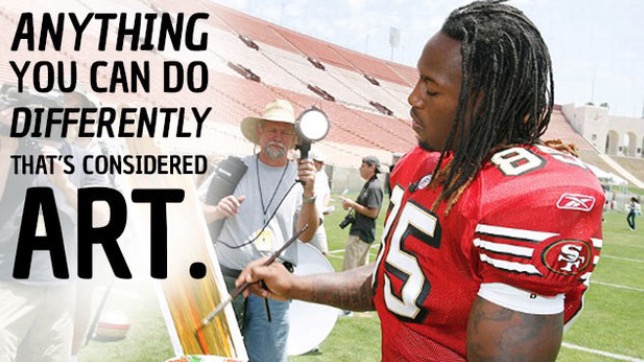 Vernon Davis grew up in inner city Washington, DC and quickly noticed his passion for visual art. He went on to change his major while at the University of Maryland from criminal justice to studio art. He now continues to pursue his passion of art through painting. He now sponsors a visual arts scholarship, promoting the arts for interested high schoolers in the San Francisco area. Davis, who was initially embarrassed by his interest in the arts while a high school student, has said that the arts have provided him with a refuge away from football life. It has also taught him the importance of self-confidence, and wants to be sure that students interested in the arts are able to follow their interests regardless of social pressures of their peers.
Vernon Davis grew up in inner city Washington, DC and quickly noticed his passion for visual art. He went on to change his major while at the University of Maryland from criminal justice to studio art. He now continues to pursue his passion of art through painting. He now sponsors a visual arts scholarship, promoting the arts for interested high schoolers in the San Francisco area. Davis, who was initially embarrassed by his interest in the arts while a high school student, has said that the arts have provided him with a refuge away from football life. It has also taught him the importance of self-confidence, and wants to be sure that students interested in the arts are able to follow their interests regardless of social pressures of their peers.
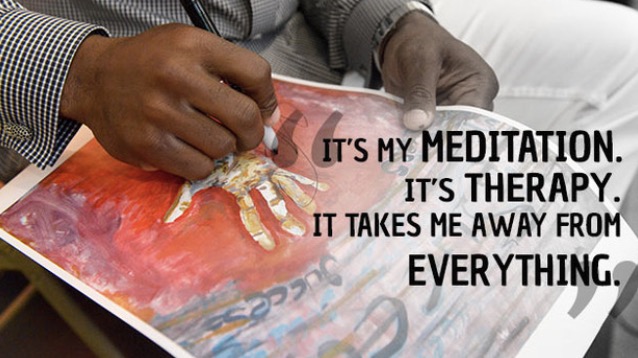 These two athletes are providing a great example of the multidimensionality of professional athletes. These men have dedicated hours upon hours for a significant portion of their lives to football, but have found an alternative outlet in STEAM (Science, Technology, Engineering, Arts, and Mathematics). It is important to note that education in these domains is pivotal for our education system. We must expose children of all communities to these realms, providing them with a variety of options to pursue. The ability of Urschel and Davis to use their platforms to advocate for STEAM is a significant stride for education, especially in the underserved communities in which they have spent their time.
These two athletes are providing a great example of the multidimensionality of professional athletes. These men have dedicated hours upon hours for a significant portion of their lives to football, but have found an alternative outlet in STEAM (Science, Technology, Engineering, Arts, and Mathematics). It is important to note that education in these domains is pivotal for our education system. We must expose children of all communities to these realms, providing them with a variety of options to pursue. The ability of Urschel and Davis to use their platforms to advocate for STEAM is a significant stride for education, especially in the underserved communities in which they have spent their time.
Share

September 28, 2015
Why aren’t you smiling
Serena Williams’ womanhood has recently been under question. If you google ‘serena williams womanhood', you without a doubt, stumble upon some articles speculating that she is a male due to her amazing body. The body shaming that has surfaced due to this fit African-American Tennis player has without a doubt come at an interesting time, at the peak of her career. It seems as though the media had to discredit her exceptional achievements and question her on every move (including gender and health).
Interestingly enough, many of the gender questions have ended as it has become public knowledge that she has a relationship with Drake, the Canadian actor and rapper. Now that she has a man on her arm, she is somehow now validated as a woman. The presence of a man, or his absence, should not be validating criteria to how feminine a woman is perceived. But because the media has “evidence” of her sexuality, there is no one questioning her womanhood any longer.
It often seems like the media just won’t let Serena live. As a woman, and one who smiles pretty often, it actually grinds my gears when I am asked why I’m not smiling. Most of the time there is some male stranger who thinks they have the authority and the privilege to tell me to smile. I assume this describes the reporter who thought it was reasonable to ask Serena during the press conference why she wasn’t smiling. Unfortunately we live in a society where some members expect you to react in a prescribed way. When you don’t, they assume something must be wrong as the reporter did during the press conference.
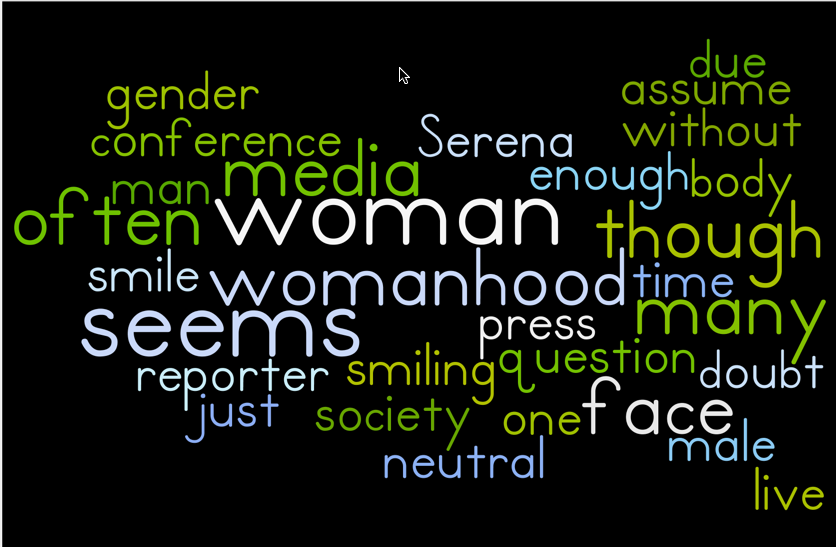
It is as though society unconsciously has a problem when females keep a neutral face. During the recent Apple Event this September, the Adobe Creative Suite presentation showed the ease of being to edit the woman’s face from neutral to a moderate smile. The model’s resting face was not good enough and had to be modified it seems. It often seems as though many women just can’t win. We can only wait for the day when our world is willing to accept that there are many definitions of a woman and all of them are SELF-DEFINED requiring no explanation.

Follow @myhealthimpact on Twitter; see myHealthImpactNetwork.org (Web) and myHealthimpact (Tumblr and YouTube).
Share

September 22, 2015
The Importance of Awareness
It was not until high school that I learned that I held the trait for sickle cell. During my high school athletic years I did not feel significantly impeded by my health status, and even briefly considered playing collegiate football. I however did not make that decision based 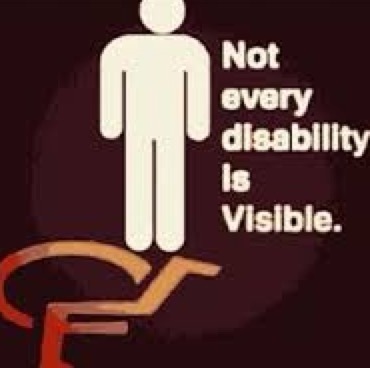 on my status as a carrier for sickle cell, but instead on my passion for football at the time. Losing the last game of my high school career took a toll on my desire to continue playing.
on my status as a carrier for sickle cell, but instead on my passion for football at the time. Losing the last game of my high school career took a toll on my desire to continue playing.
For the most part, I do not think about sickle cell trait, but I recently had an experience that caused me to take precaution. I participated in a retreat that took place in the Rocky Mountains of Colorado. Initially, I was reminded of Ryan Clark, former NFL safety for the Pittsburgh Steelers. Clark had life threatening complications following a game in Denver due to the altitude and dehydration from the game. Following a game against the Denver Broncos, Clark was hospitalized and eventually had his spleen and gall bladder removed. Due to his ailment he lost 30 pounds and was deemed unable to play for the remainder of the season. Although I was not undergoing the same physical exertion as Clark, I was weary of the outcomes of my activities.
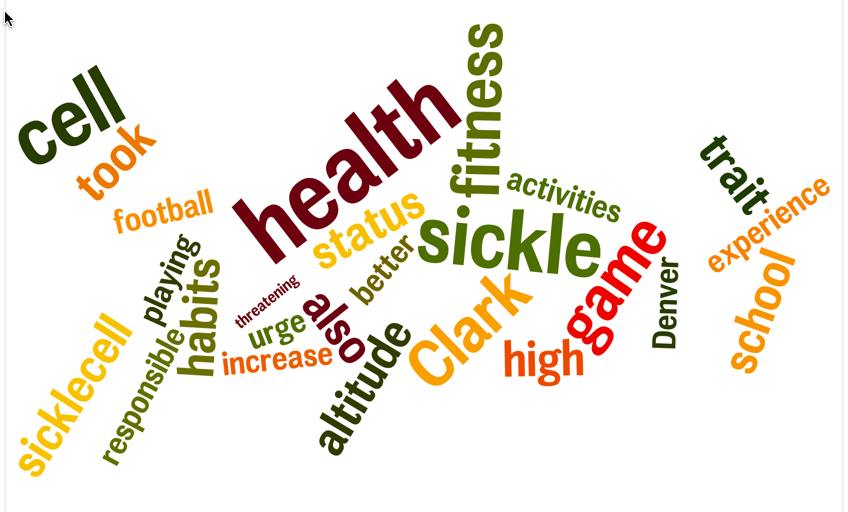
We were given strategies to cope with the change in altitude, all of which I took very seriously. Even with the increase in water consumption, my adjustment to the drastic increase in altitude was slower than my classmates. I found myself having trouble falling asleep and going about daily activities, which was initially frustrating, but also worrisome. I started thinking about my health and taking responsibility for my fitness. I realized that my difficulties, although rooted in the presence of the sickle cell trait, could have been aided by better fitness habits beforehand.
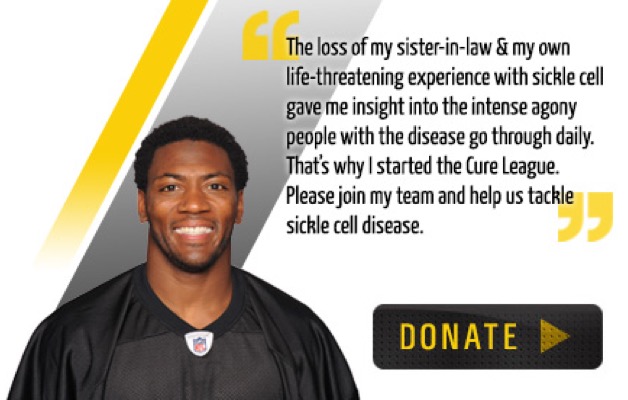 The experience reinforced my belief in the importance of being responsible for one’s own health. I know that I must practice better fitness habits, especially since I intend to work in the medical field. I urge everyone to not only stay responsible for their health by practicing healthy fitness habits, but also be conscious of their health status. As we celebrated the awareness of sickle cell disease, it is also important to urge those around you to be informed of their health in general.
The experience reinforced my belief in the importance of being responsible for one’s own health. I know that I must practice better fitness habits, especially since I intend to work in the medical field. I urge everyone to not only stay responsible for their health by practicing healthy fitness habits, but also be conscious of their health status. As we celebrated the awareness of sickle cell disease, it is also important to urge those around you to be informed of their health in general.
Stay up to date on the latest news and health trends by following @myhealthimpact on Twitter and Tumblr.
#sicklecell
#sicklecellawareness
#sicklecellawareness2015
#fitness
Share

July 15, 2015
Access to Health – A Privilege - and Two Brothers Planning to Collaborate
When I was growing up, eating healthy and physical fitness was something that was talked about fairly often in my household. I played sports throughout my childhood and remained very active. And for the most part, this was the case for everyone in my family. I always had access to a gym, fresh fruits and vegetables. Having the ability to eat healthy is a luxury, and I never really realized how much of a privilege it was until I was exposed to some statistics. “A recent multistate study found that low-income census tracts had half as many supermarkets as wealthy tracts. Another multistate study found that eight percent of African Americans live in a tract with a supermarket, compared to 31 percent of whites” (Bell). I would love to say that a statistic like this really stands out but it doesn’t at all. Minorities, particularly African-Americans, as a community, are extremely disadvantaged when it comes to healthcare as compared to their white counterparts.
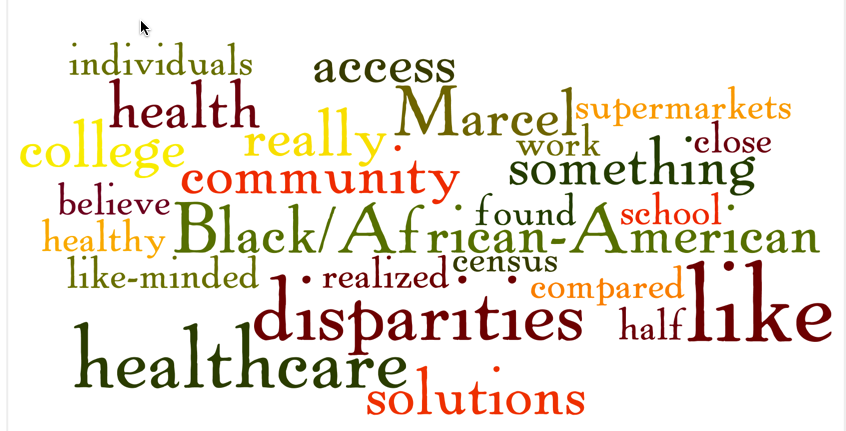
When I first began to understand the notion of health disparities, I was intrigued and motivated. Why should citizens of the United States already a decade and a half into the twenty first century not have access to supermarkets close to their places of residence? Over time, I have realized that this is something I would like to change. Closely approaching my senior year of college, I have had the privilege of completing two ethnographic studies that examine pharmacy and supermarket access as well as examining health related racial disparities. Both of these studies examined the neighborhood of East Liberty in Pittsburgh, Pennsylvania which according to 2013 census data is around 74% Black/African-American.
I feel so personally invested in the discussion of healthcare disparities and healthcare equality for all because I identify with the Black/African-American community. After college ,I would like to further my knowledge on these subjects by pursuing my Masters degree in public health. I believe my future education will give me not only the tools and resources to think of potential solutions to my community’s problems but also allow me to work with other like-minded individuals.
One of the like-minded individuals I hope to work with in the future is Marcel Souffrant. Marcel and I went to high school together and have been close friends since around 2011. He is currently planning to attend medical school following graduation from college in the spring of 2016. In a true collaborative effort, I believe we can both help craft potential solutions to these healthcare disparities that currently plague the Black/African-American community. Two Black/African- American men working together to create solutions to these chronic issues is something I am really beginning to like the sound of. Follow the journey along at @myhealthimpact for this, other health-tech topics and voices of young people like me and Marcel.
Citations
Bell, Judith, Gabriella Mora, Erin Hagan, Victor Rubin, and Allison Karpyn. "Access to Healthy Food and Why It Matters." Thefoodtrust.org. Policy Link, 2013. Web. 10 July 2015. <http://thefoodtrust.org/uploads/media_items/grocerygap.original.pdf>
Share

May 03, 2015
What Ever Happened To Your Favorite Players?
As you can see below, both rising stars and professional athletes are dying from heart disease each and everyday! This interactive infographic shows the fate of athletes who died, retired or was forced to have surgery as a result of their heart condition. It's really disheartening because a lot these professionals died early on affecting not just fans but their families. Let's not only remember the names on the back of a jerseys but also use their story to identify heart diesase in young athletes and prevent misdiagnosis from so many lives short.
Tweet us @myhealthimpact to let us know if any of the players on this shocked you!
Share

April 30, 2015
Heart Health in Young Athletes
 When we are young we are told and reminded of the importance of exercise and why we need to remain active. My parents were sure to emphasize the benefits of physical activity and to this day, continue to do so. This is why it often surprises me when I hear of professional athletes passing away from heart attacks and cardiovascular related health issues. These are people whose career is centered on remaining active and physically fit, but there is no certainty that these habits remained after they’re playing careers came to an end. More striking however is the seemingly prevalent occurrence of young athletes, at the high school and college age, who have suddenly passed due to cardiac arrest. It is estimated by the American Academy of Pediatrics that “2,000 people under the age of 25 die from sudden cardiac arrest in the United States every year.” This is a striking figure because this encompasses a group of young adults who generally, are at the peak of their physical fitness.
When we are young we are told and reminded of the importance of exercise and why we need to remain active. My parents were sure to emphasize the benefits of physical activity and to this day, continue to do so. This is why it often surprises me when I hear of professional athletes passing away from heart attacks and cardiovascular related health issues. These are people whose career is centered on remaining active and physically fit, but there is no certainty that these habits remained after they’re playing careers came to an end. More striking however is the seemingly prevalent occurrence of young athletes, at the high school and college age, who have suddenly passed due to cardiac arrest. It is estimated by the American Academy of Pediatrics that “2,000 people under the age of 25 die from sudden cardiac arrest in the United States every year.” This is a striking figure because this encompasses a group of young adults who generally, are at the peak of their physical fitness.
Perhaps one of the more prominent stories in the last year is the story of Isaiah Austin. Austin, a former basketball player at Baylor University, declared himself eligible for the NBA Draft last year. After the plethora of tests conducted by the National Basketball Association it was discovered that he could never play competitive basketball again, four days before the draft. Isaiah Austin suffered from Marfan syndrome, which caused an enlargement of his aorta. The combination of aortic enlargement and extreme physical exertion, as he would be subject to as a professional basketball player, made him susceptible to a rupture of his heart. This was the exact fate of Flo Hyman, an Olympic volleyball player, who passed away on the court due to a rupture of her aorta in 1986.
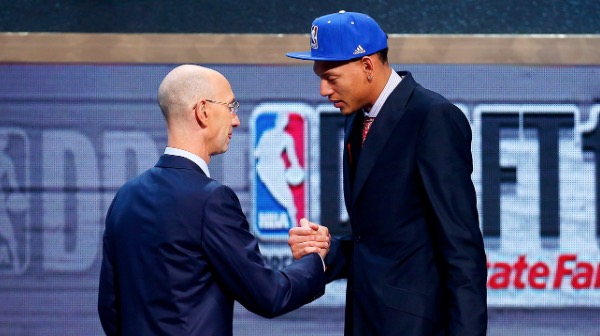 The story of Isaiah Austin generated some, but not a lot of conversation about the health of young athletes. Austin had been living with this condition and could have met his fate at any point during his athletic career at Baylor University. Fortunately this did not happen, but many student-athletes do not have the same luck. Every year there are stories of high school and college students who collapse on the athletic field, and most of these cases of sudden cardiac arrest are due to structural defects of the heart. This begs many to ask the question, should we increase the testing of our amateur athletes before they can play? Had it not been for the depth at which the National Basketball Association looks into the health of their players, the discovery of Isaiah Austin’s aortic enlargement may not have come until it was too late.
The story of Isaiah Austin generated some, but not a lot of conversation about the health of young athletes. Austin had been living with this condition and could have met his fate at any point during his athletic career at Baylor University. Fortunately this did not happen, but many student-athletes do not have the same luck. Every year there are stories of high school and college students who collapse on the athletic field, and most of these cases of sudden cardiac arrest are due to structural defects of the heart. This begs many to ask the question, should we increase the testing of our amateur athletes before they can play? Had it not been for the depth at which the National Basketball Association looks into the health of their players, the discovery of Isaiah Austin’s aortic enlargement may not have come until it was too late.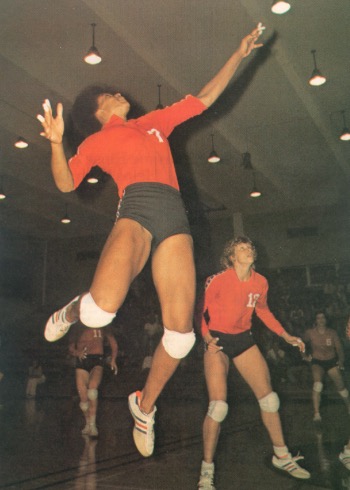
The message of remaining healthy and maintaining regular exercise is important and effective. We must also include the message to be aware and responsible for our health. School systems, colleges, and doctor’s offices should encourage student athletes and their families to become aware of their health. The opportunity to curtail the sudden death of student-athletes is available. These institutions have the ability to provide families with a stronger understanding of their health, and it should be capitalized on. Follow @myHealthimpact for more on #Health #Tech #Culture and views of #youngPeople. See us on YouTube, and follow us on Tumblr.
Share
March 01, 2015
MyHealthImpact Topics 2015
Click on the word clouds below to see a recap of the wonderful blogs by our Research Team so far in 2015.
Stay tuned to @myhealthimpact for more news on the interconnection between health and tech!
Share

January 22, 2015
Breaking the Silence
With the new sense of hypervigilance, particularly in relation to domestic violence, I hope that we as a community can come together in active support of survivors of abuse. It must be clear that violence towards others in any form should not to be accepted, regardless of profession. I hope to see advancements with the NO MORE PSA campaigns, Purple Purse, and the NFL, realizing their goals of decreased rates of domestic violence and increased support of the victims.

In recent months there has been significant media coverage concerning the lives, specifically the legal matters, of professional athletes. The abuse perpetrated by Ray Rice was seen by many outside of the sports world, and was the first of many noteworthy incidents involving his colleagues of the National Football League. Since Rice’s arrest, Greg Hardy, Ray McDonald, and Adrian Peterson have been in the news for their respective criminal acts. Athletes breaking the law is nothing new. In the past, fans have often been aware of the personal lives of athletes, even with minimal media coverage, but there seems to be a shift regarding the awareness. It is no longer solely fans who hear about the incidents, the coverage by major news outlets has increased the audience.
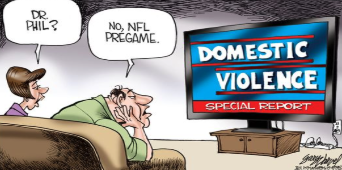
USA Today compiled a database of all NFL player arrests since 2000, citing 85 of the 713 arrests were made regarding situations of domestic violence. Being that domestic violence is the one of the most underreported crimes, it is reasonable to assume that these numbers are not completely representative of the truth. The difficulty to speak about domestic violence is highlighted in the “Speechless” series of NO MORE PSA. The commercials have aired in recent weeks showing celebrities, as well as current and former NFL players sitting in silence as they attempt to speak on domestic violence. Allstate Foundation Purple Purse is another group bringing domestic violence, and financial abuse in particular, to the forefront. Allstate Foundation reports that financial abuse occurs in 98% of domestic violence cases. This staggering number has prompted Purple Purse to make it “fashionable” to speak about domestic violence through fundraising to support survivors.
 As we have seen, the issues faced by athletes are mirroring the societal issues we are facing today. The question of corporal punishment, the prevalence of substance abuse, the charges of domestic violence, and even the statements of solidarity displayed following the killings in Ferguson and Staten Island, in relation to the athletes of the NFL, have all led to further questions addressing all people, instead of athletes exclusively. We must continue to recognize that as contributing members of society we have a responsibility to treat ourselves, and each other, with respect and dignity at all times.
As we have seen, the issues faced by athletes are mirroring the societal issues we are facing today. The question of corporal punishment, the prevalence of substance abuse, the charges of domestic violence, and even the statements of solidarity displayed following the killings in Ferguson and Staten Island, in relation to the athletes of the NFL, have all led to further questions addressing all people, instead of athletes exclusively. We must continue to recognize that as contributing members of society we have a responsibility to treat ourselves, and each other, with respect and dignity at all times.
Continue to follow @myhealthimpact on the latest news regarding domestic violence and your health!
Share
In Partnership with: Poole College of Management, College of Humanities and Social Sciences, National Science Foundation, Penn State
Take Action, Get Tested: Find Your Local Testing Center Why Get Tested?
